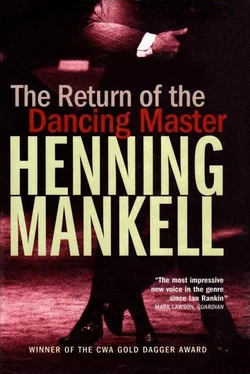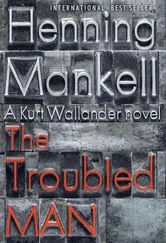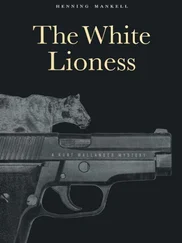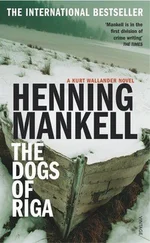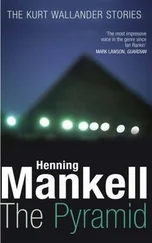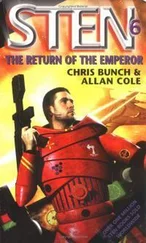He drove back to the main road. He would return to Sveg, have something to eat, then wait for Larsson to phone. Nothing more. He’d tell Larsson about his visit to Berggren. About the Nazi uniform in her wardrobe. He hadn’t had an opportunity to do so during the night, and he wasn’t going to leave until he’d passed on everything that might help Larsson in his investigation.
He came to the turnoff to Molin’s house. He had no intention of stopping. Even so, he stamped so hard on the brakes that he skidded on the slippery surface. Why did he stop? One last visit, he thought. One final short visit, that’s all. He drove up to the house and got out. There were animal tracks on the white ground. A hare, he thought. He searched his memory to recall the pattern of those bloodstained footprints. He reproduced them on the white ground. Tried to picture Molin and his doll. A man and a doll dancing the tango in the snow. At the edge of the forest an Argentinean orchestra is playing. What instruments make up an Argentinean tango orchestra? Guitar and violin? Bass? Accordion, perhaps? He didn’t know. It wasn’t important. Molin had been dancing with death without knowing it. Or maybe he did know that death was there in the forest, waiting for him? He kept an eye on movements in the shadows even when I knew him, or at least thought I knew him. An elderly policeman who had never particularly distinguished himself. Even so he made time to talk to me, a raw young police officer who knew nothing about what it was like having a drunk throw up all over you, or a drunken woman spitting at you, or a raving psychopath trying to kill you.
Lindman looked hard at the house. It seemed different, now that the ground was white. He turned his attention to the shed. He’d been in there the first time, but then he’d been more interested in the house. He opened the door. It was one room with a concrete floor. He turned on the light. There was a stack of firewood along one wall. On the opposite wall was a bench, shelves full of tools, and a metal locker. Lindman opened it, thinking that there might be a police uniform inside, but there was only a set of dirty coveralls and a pair of rubber boots. He closed the locker and looked around the room again. What does it have to say? he asked himself. The stack of firewood tells us that Molin knew how to build the perfect woodpile, but not much else. He turned his attention to the shelves of tools. What did they have to say for themselves? Nothing unexpected.
Lindman recalled that when he was a child his father had a toolshed in Kinna. It looked just like this one. Molin had everything he needed for minor repairs to the house and his car. There was nothing that didn’t fit the pattern, no tool that suggested an unexpected story. He resumed his tour of the shed.
In one corner was a pair of skis with poles. Lindman took one of the skis to the doorway. The binding was worn. So Molin had used them. Maybe he’d skied over the lake when it was covered in ice and the weather was good? Because he enjoyed it? Or because he needed the exercise? Or to go fishing through the ice? He put the ski back. What was this? Something unexpected. Another pair of skis, shorter, possibly ladies’ skis. Now he could envisage two people gliding over the frozen lake, in glitteringly clear winter weather. Molin and Berggren. What did they talk about when they were out skiing? Or perhaps you didn’t talk when you were skiing? Lindman didn’t know because he hadn’t skied since he was a child. He continued his search. In another corner was a broken sled, some coils of steel wire, and some roof tiles.
Something caught his eye. He looked more closely. It took him almost a minute to realize what it was. The tiles were lying haphazardly. Here was something that didn’t fit into the pattern. Molin solved jigsaw puzzles, he stacked firewood with a feeling for symmetry and order. The same applied to the tools. They were all neatly arranged. But not the tiles. They weren’t orderly in the same way as the rest. He bent down and removed them, one by one.
Underneath was a sheet of metal sunk into the concrete floor. A lid, locked. Lindman stood up and fetched a crowbar from among the tools. He forced it into the crack between the floor and the edge of the lid, and used all his strength to lever it open. It gave way suddenly, and Lindman fell over, banging his head against the wall. His hand was bloodstained when he rubbed his head. There was a box of rags under the tool shelves. He wiped his forehead and pressed a rag against his head until the bleeding stopped.
Then he looked into the hole in the floor. There was a package inside. When he lifted it, he could see it was something wrapped in an old black raincoat. Molin was very close to him now. He had hidden something under the floor that he didn’t want anyone else to see. Lindman put the package on the bench, apologizing silently to Molin, then moved the tools out of the way. The package was tied with thick string. Lindman untied the knots and removed the raincoat.
There were three objects: a black notebook, some letters tied with red ribbon, and an envelope.
He started by opening the envelope. It contained three photographs. He was not surprised by what he saw. He’d known, ever since that visit to Berggren’s. Deep down, he’d known, and here was the confirmation. There were three black-and-white photographs. The first was of four young men with their arms around each other’s shoulders. They were looking straight at the camera. One of the four was Herbert Molin, at that time August Mattson-Herzén. The background was unclear, but it could have been a house wall. The second photograph was of Molin alone. It was taken in a studio, the name of which was at the bottom of the picture.
The third photograph was also of Molin as a young man. Here he was standing beside a motorcycle and sidecar. He was holding a rifle. He was smiling at the camera. Lindman laid the photographs side by side. They also had this in common: Molin’s clothes. His uniform. It was the same as the one in Berggren’s wardrobe.
There was a story about Scotland.
It was in the middle of the diary, slotted like an unexpected parenthesis into the account Molin had written of his life. In May 1972, Molin has two weeks’ vacation. He takes a ferry from Göteborg to Immingham on the east coast of England. He takes a train to Glasgow and arrives late in the afternoon of May 11. He checks into Smith’s Hotel, which, according to his description of it, is “close to some museums and a university,” but he doesn’t visit the museums. The next day he rents a car and continues his journey northwards. His diary says that he passes through Kinross, Dunkeld, and Spean Bridge. He drives for a long way that day, as far as Drumnadrochit on the western shore of Loch Ness, where he stays the night. He doesn’t look for the monster, however.
Early on the morning of May 13, he drives on along the lochside and reaches his destination in the afternoon: the town of Dornoch, situated on a peninsula east of the Highlands. He checks into the Rosedale Hotel near the harbor, and notes in his diary that “the air here is different from that in Västergötland.” He doesn’t explain in what way it is different. Now he has reached Dornoch, it’s the middle of May 1972, and so far he has made no mention of why he’s here. Just that he will meet “M.” And he does in fact meet “M.” that same evening. “Long walk through the town with M.,” he writes. “Strong wind, but no rain.” He makes the same note for each of the next seven days. “Long walk through the town with M.” Nothing more. The only thing he finds worth remembering is that the weather changes. It seems always to be windy in Dornoch, but sometimes it’s “pouring down,” sometimes the weather is “threatening,” and just once, on Thursday, May 18, “the sun is shining” and it’s “rather warm.” A few days later he drives back the same way as he came. It is not clear whether it’s the same rental car, or whether he has dropped off the first one and rented another. On the other hand, when he comes to pay his bill at the Rosedale Hotel, he’s surprised that “it didn’t cost more.” After a few more days, having been forced to spend an extra twenty-four hours in Immingham due to “the ferry’s engine breaking down,” he returns to Göteborg and then Borås. By May 26 he’s back at work.
Читать дальше
